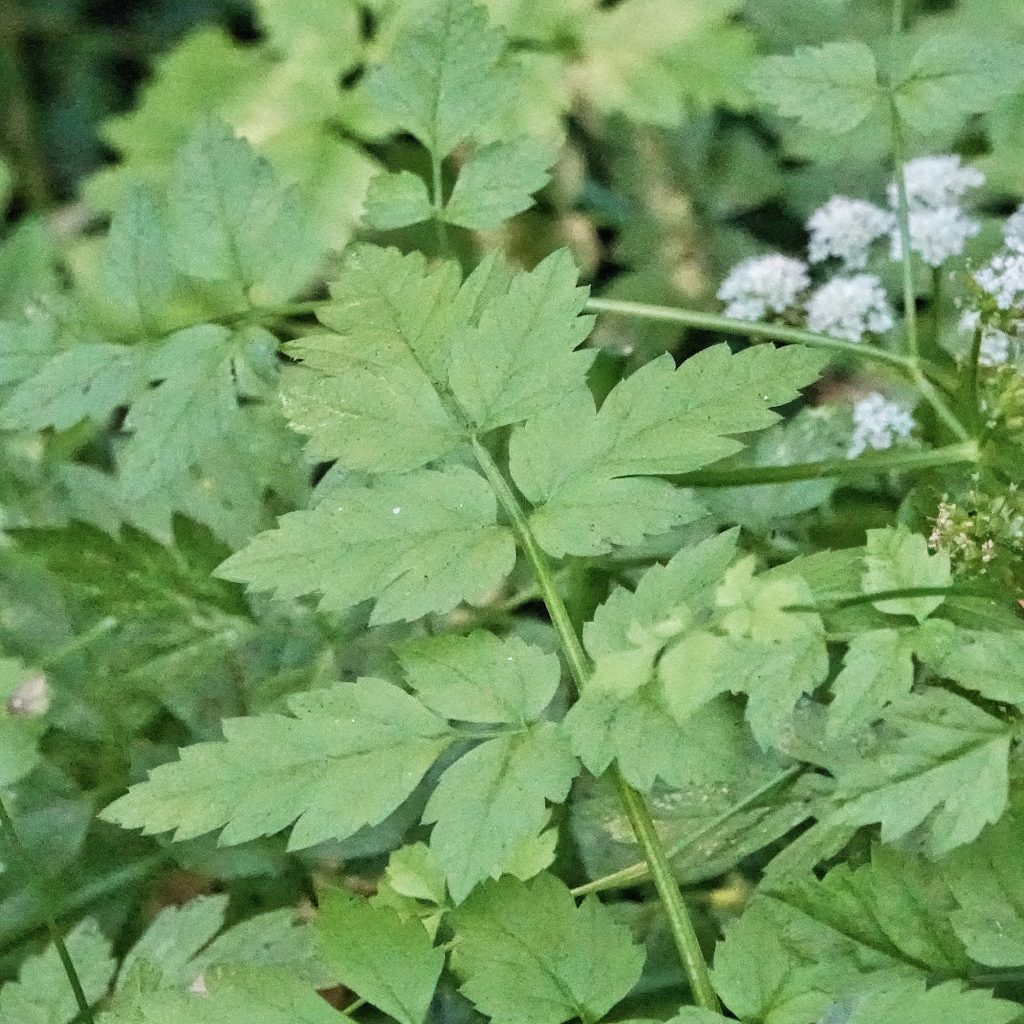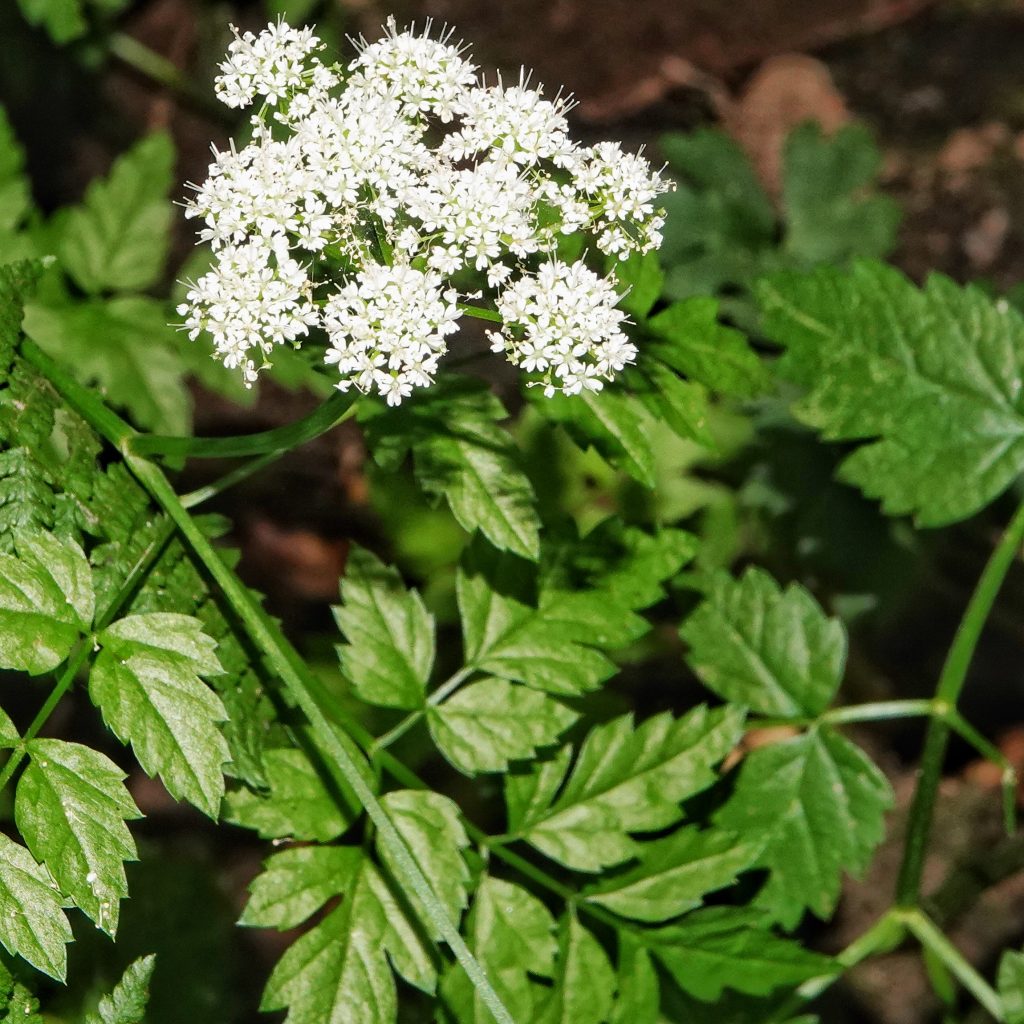
These members of the parsley family (Apiaceae) have several common names, including Pacific water-parsley, oenanthe, Pacific water-dropwort, and American water-parsley. The flower clusters are pretty little things, though hardly showy, and the foliage has a nice texture, but this doesn’t seem to be a particularly popular garden plant. Still, it is a welcome sight on the stream sides and marsh edges where I most frequently encounter it.
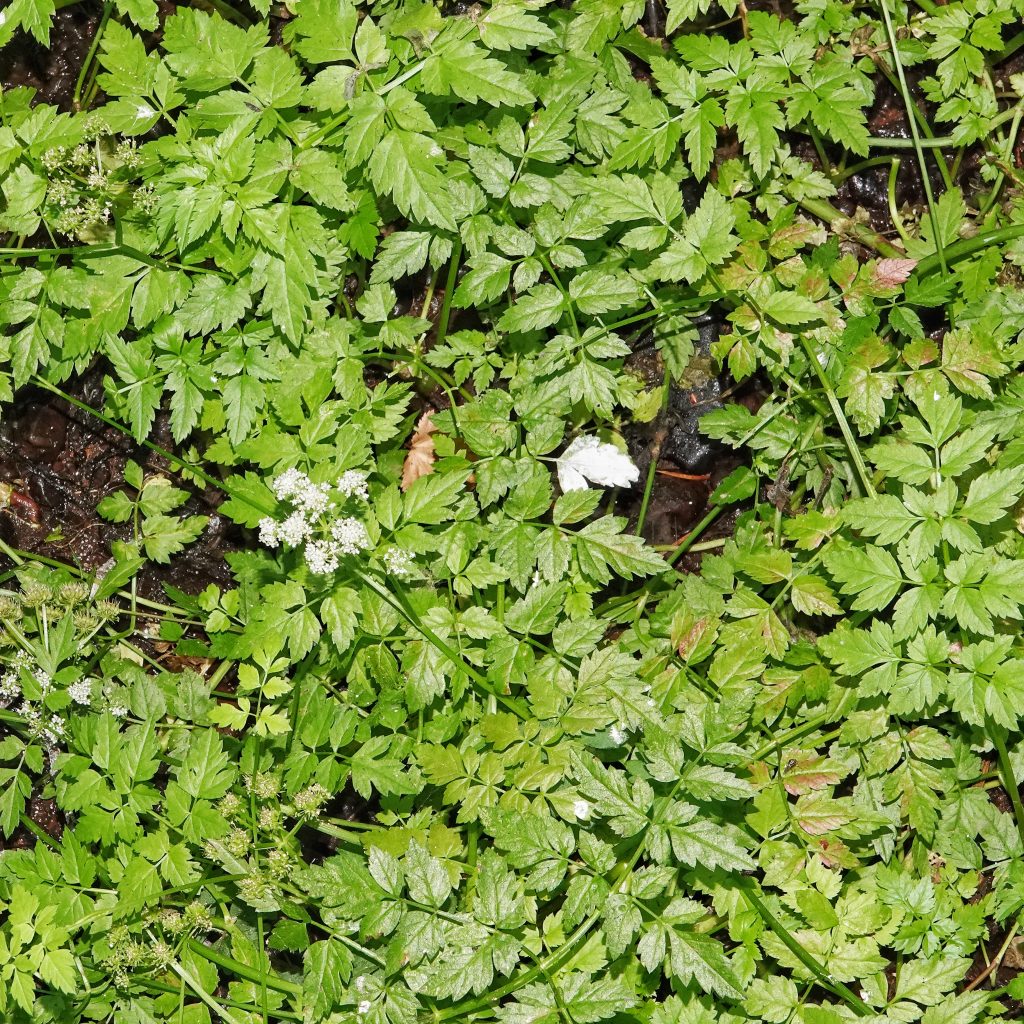
The young stems of this plant were sometimes used, either raw or cooked, as a food source by indigenous peoples, and the roots have been boiled and eaten. The hollow stalks were cut and used as whistles by children, and decoctions of the roots and whole plant were used as an emetic, cathartic, and laxative. Some cultures considered Oenanthe sarmentosa as a whole to be poisonous, while some used it ceremonially to induce visions. This is because the plant contains the chemical compound myristicin, which has both insecticidal and psychotropic effects.
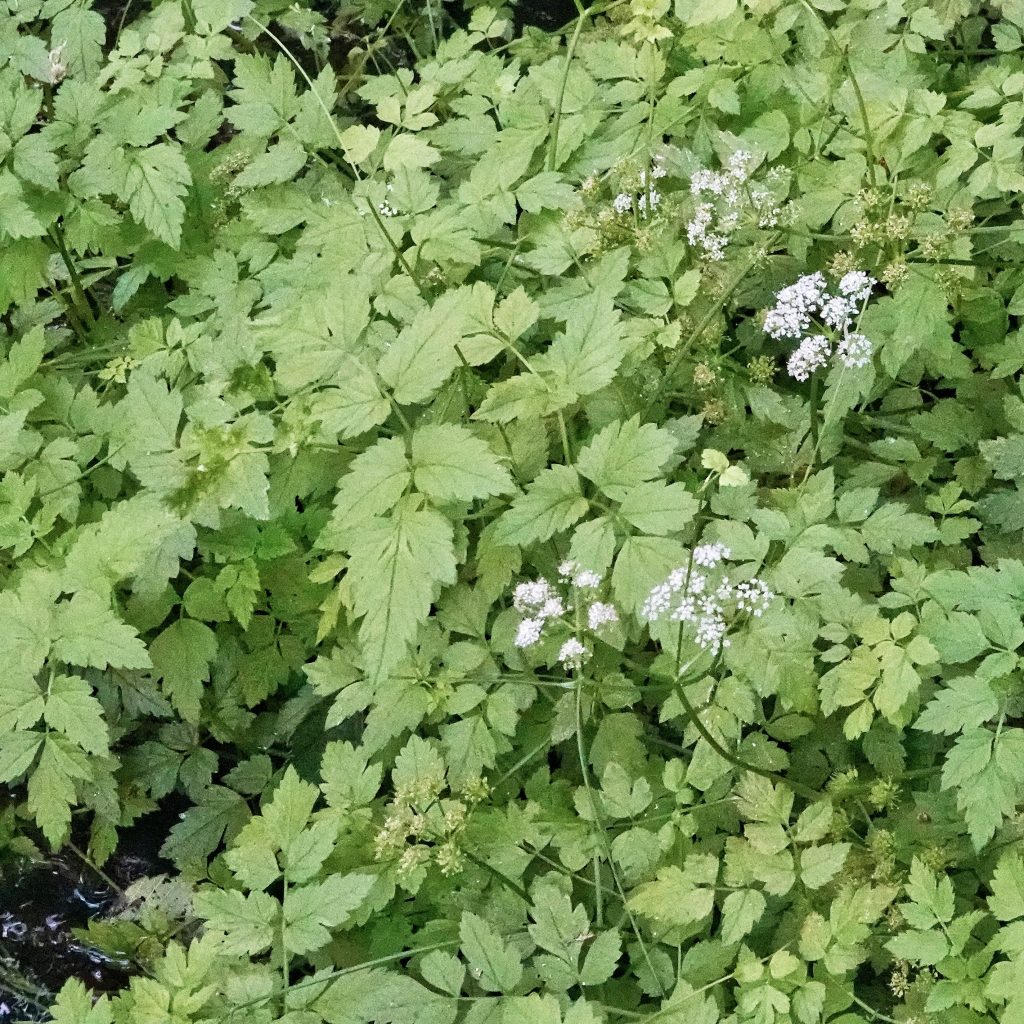
Myristicin is toxic to cells, and has amphetamine properties that break down into chemicals similar to MDMA (ecstasy). This compound is also present in nutmeg, which is why some of the bolder/more foolish stoner friends of our youth would ingest the stuff in high doses. Oenanthe sarmentosa has much lower levels of myristicin than nutmeg, and cooking negates most of its dangerous properties, but since sensitivity to chemicals varies from person to person, and myristicin can cause vomiting, abdominal pain, tachycardia, high blood pressure, low blood pressure, and even death, it hardly seems worth the risk to me.
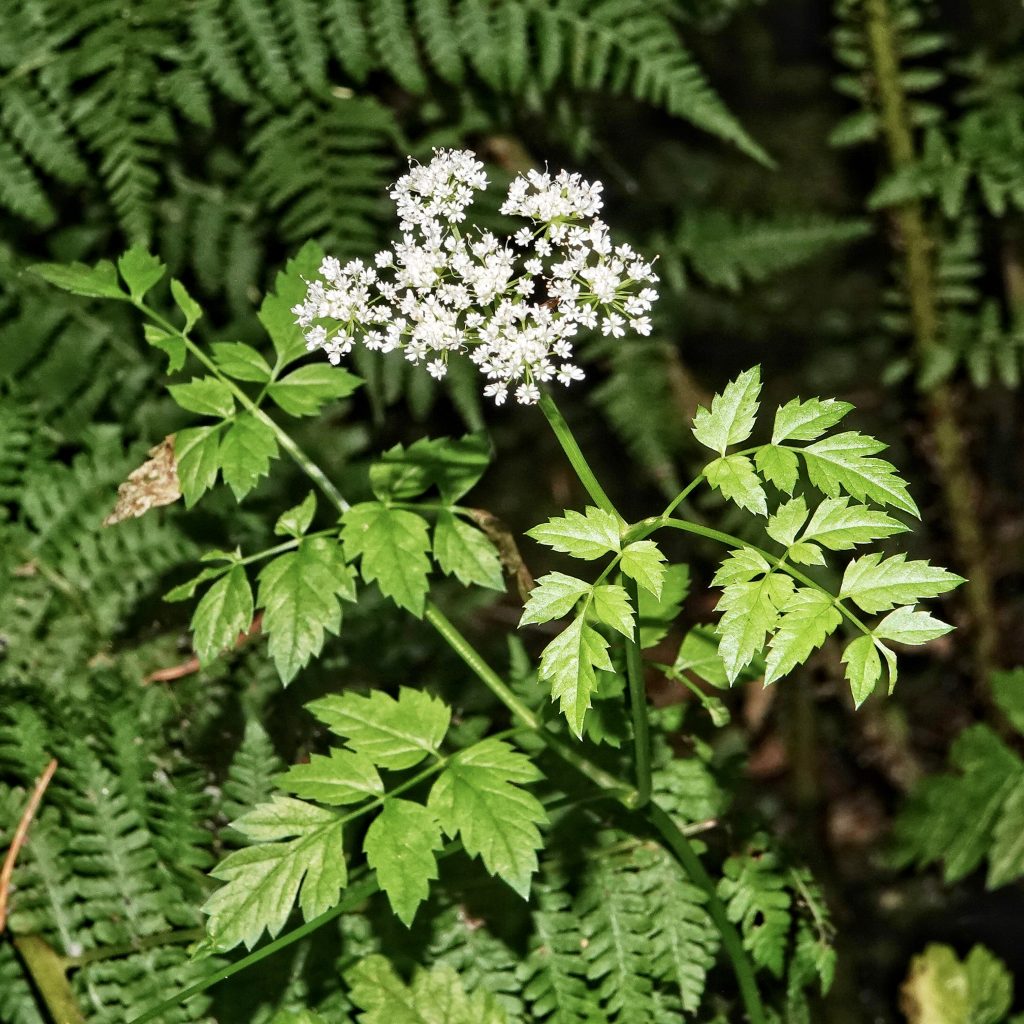
Description-Low growing (may be up to 3’ tall, but usually less than 2’) perennial with erect to sprawling stems, opposing leaves divided into leaflets, and a flat topped umbel inflorescence with 5 to 20 clusters of small white flowers; leaflets are ovate, irregularly lobed into large teeth, with veins in line with the end of the teeth.
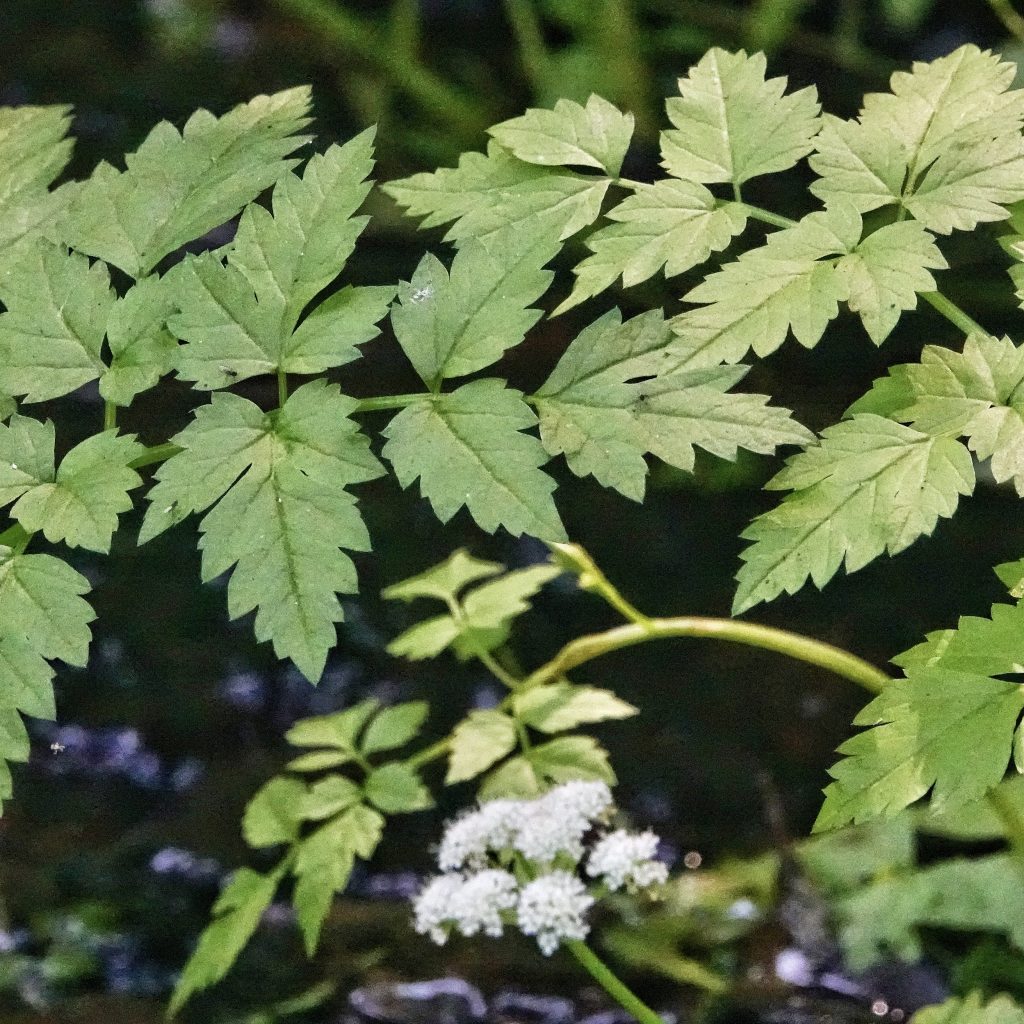
Similar species–Sium suave (water parsnip) has unlobed, linear, finely toothed upper leaflets, and the veins don’t line up with the teeth; Osmorhiza sp. (sweet cicely) have tiny, greenish white flowers; Cicuta douglasii (water-hemlock) has unlobed, lanceolate, regularly sawtoothed leaflets.
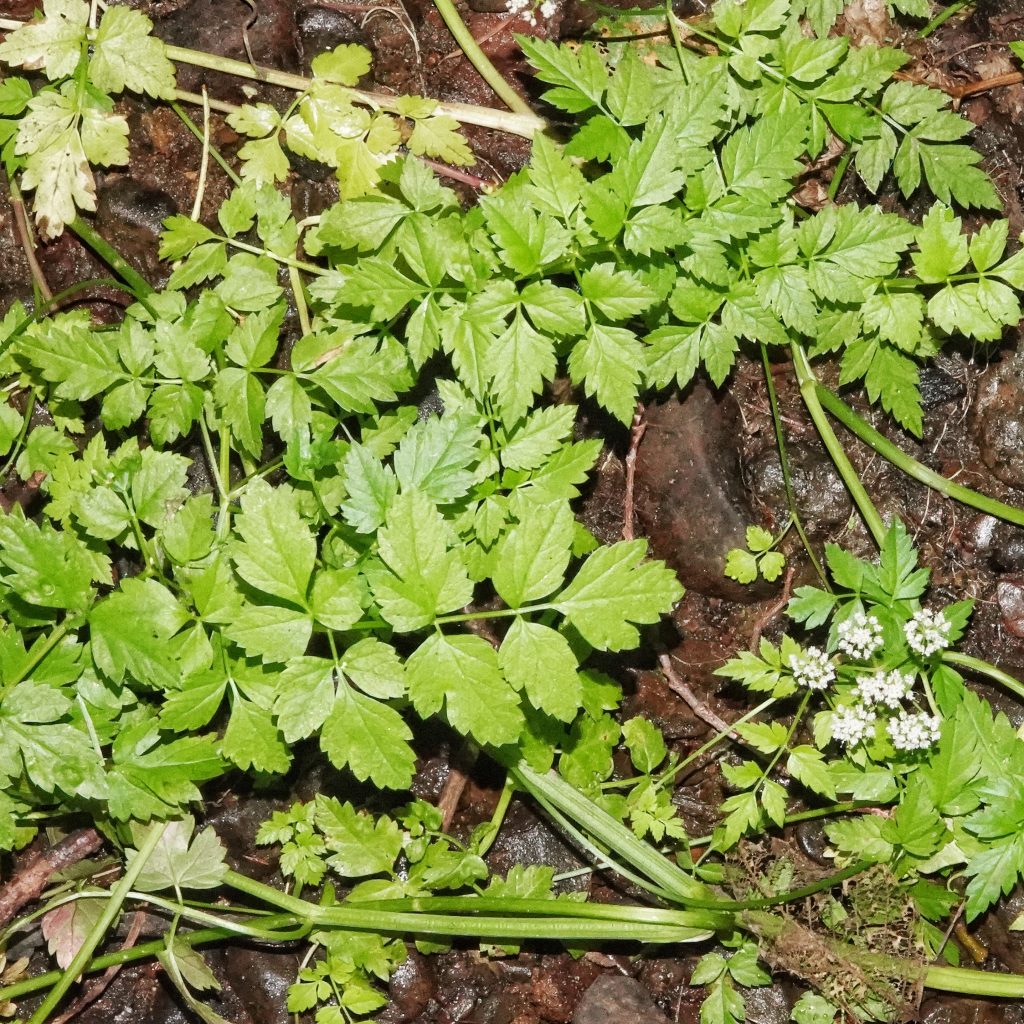
Habitat-In or near partially to fully shaded streams, ditches, ponds, lakes, marshes, bogs, wetlands, vernally wet areas, up to 4,000’ elevation
Range-Native to western North America; primarily found west of the Cascade crest in our region, with some disjunct populations in montane areas on the eastside.
Reproductive timing-Blooms June into September.
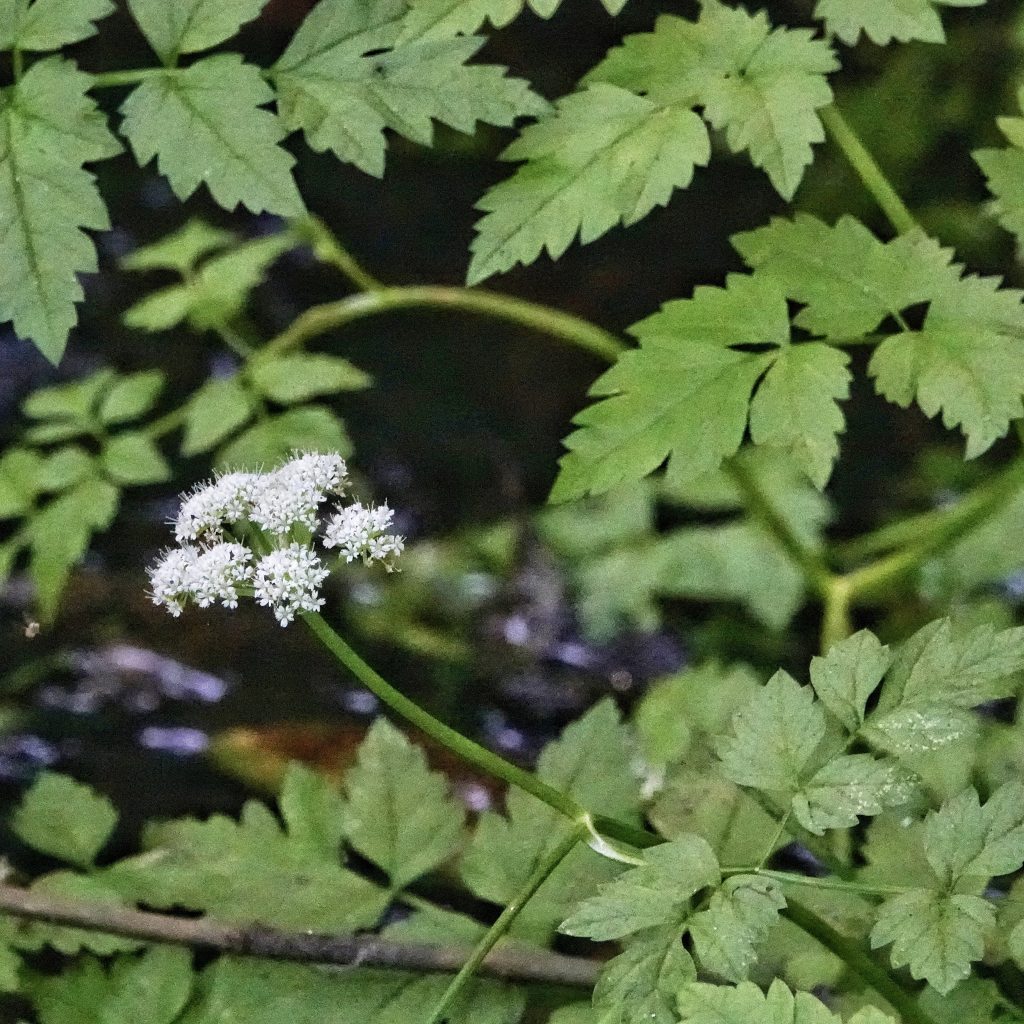
Eaten by-Larval host for the butterfly Papilio zelicaon (Anise Swallowtail), the moths Agonopterix rosaciliella, A. oregonensis, and Depressaria daucella, and the leaf mining flys Liriomyza huidobrensis, Phytomyza oenanthoides, and Euleia fratria; some browsing mammals eat the leaves, but avoid the stems and roots.
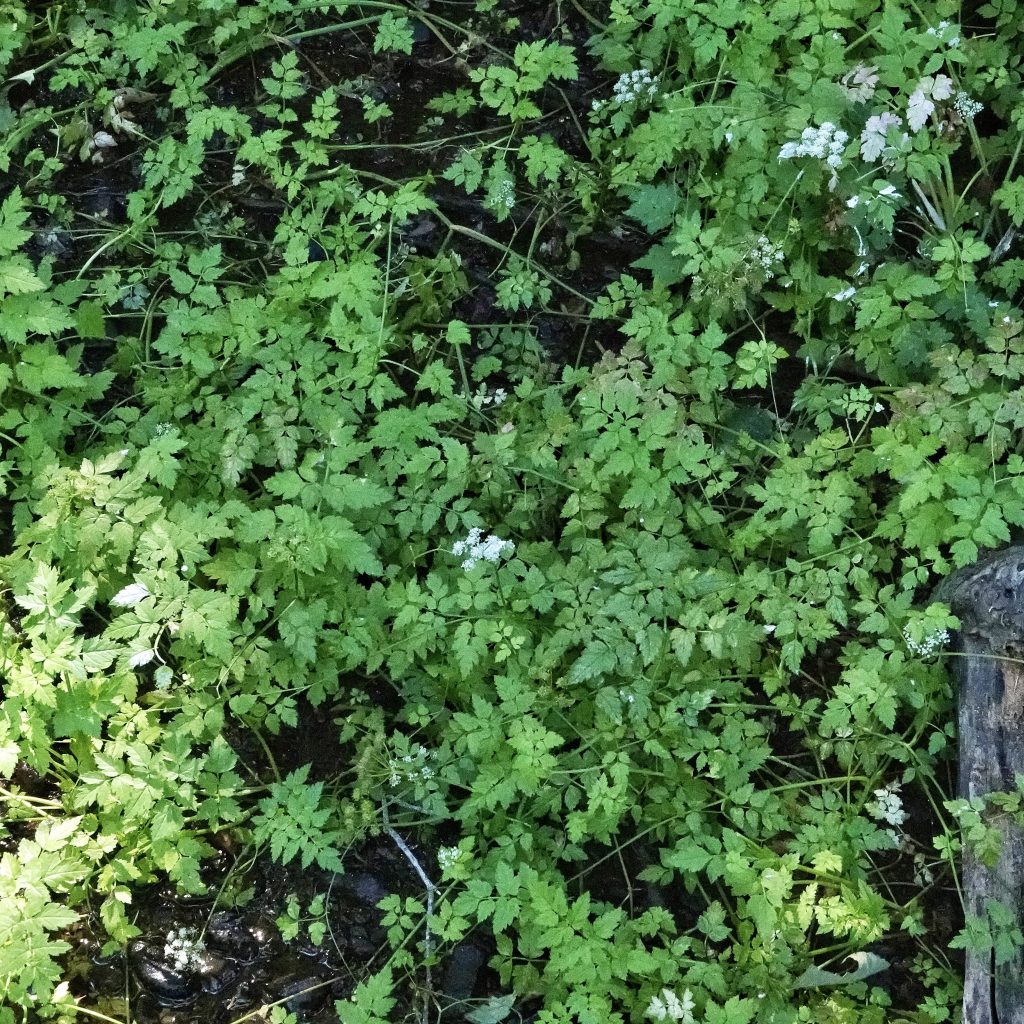
Etymology of names–Oenanthe is from the Greek words for ‘wine’ and ‘flower’, because some members of this genus were used to flavor wine. The specific epithet sarmentosa is from the Latin word for ‘stolons/runners’, presumably referring to the sprawling runners of this species.
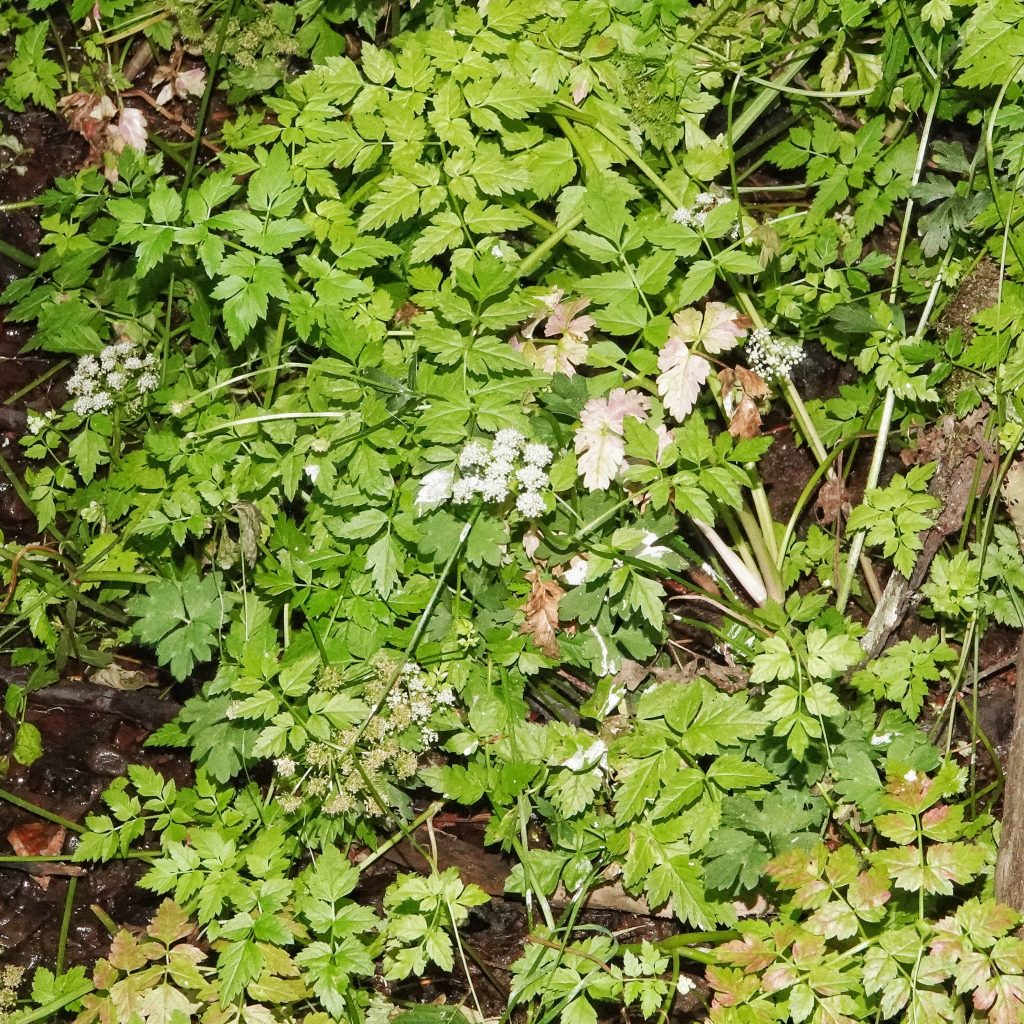
https://pfaf.org/user/Plant.aspx?LatinName=Oenanthe+sarmentosa
https://en.wikipedia.org/wiki/Myristicin
OregonFlora Oenanthe sarmentosa
BRIT – Native American Ethnobotany Database
http://biology.burke.washington.edu/herbarium/imagecollection/taxon.php?Taxon=Oenanthe%20sarmentosa
https://linnet.geog.ubc.ca/Atlas/Atlas.aspx?sciname=Oenanthe%20sarmentosa
https://www.uwb.edu/wetlands/plants/oenanthe-sarmentosa
Nutmeg – The dose makes a Toxin – University of Copenhagen
